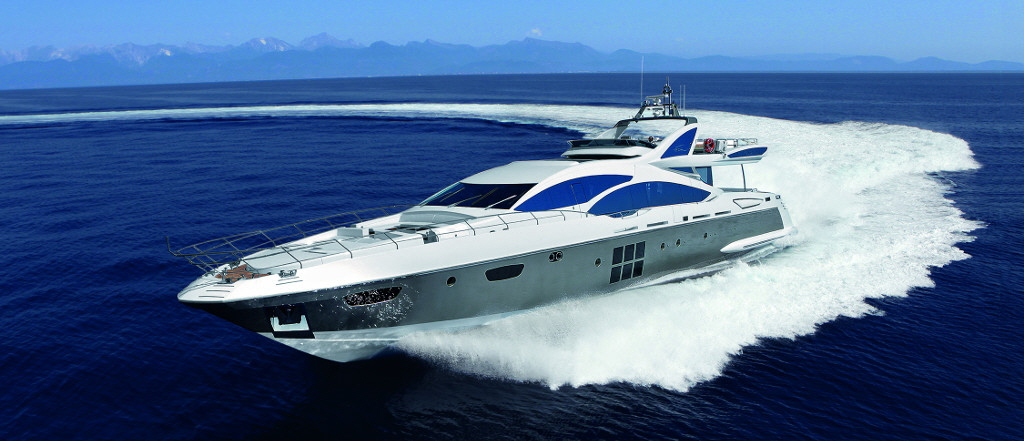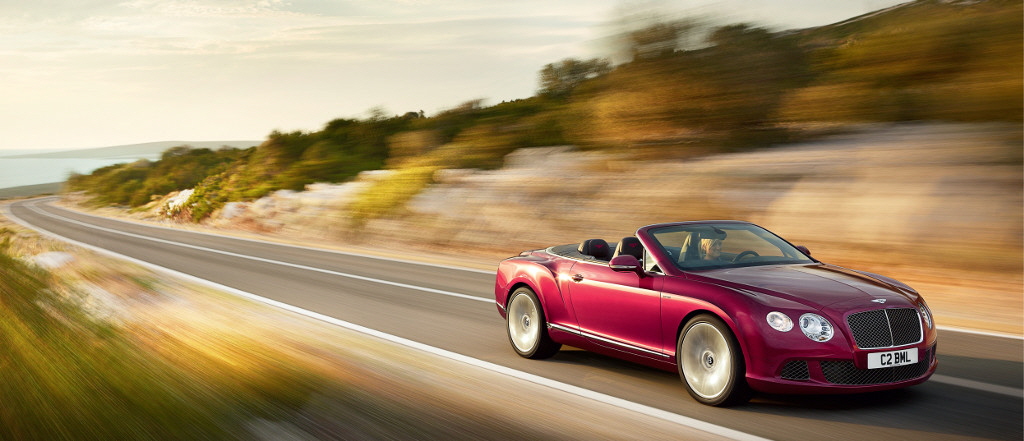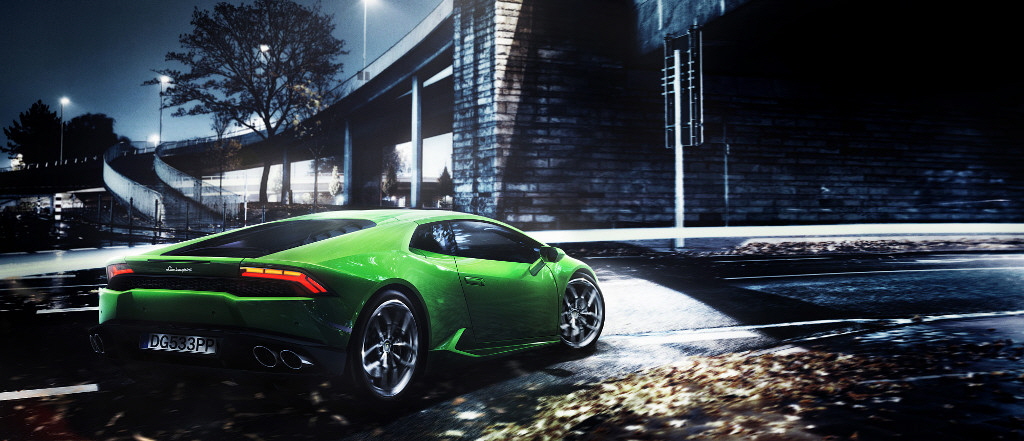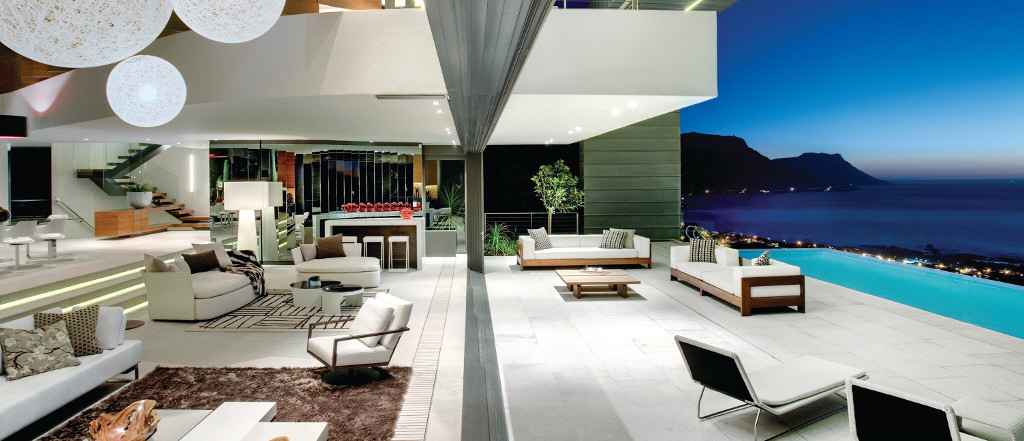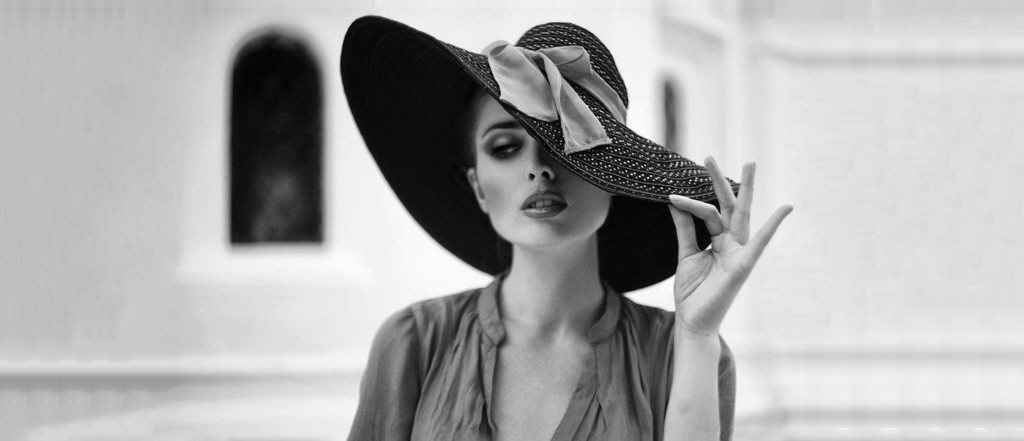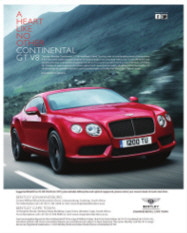JUNE 2015
ELON MUSK - ‘South Africa’s Billionaire Bachelor’
‘We should be on a path to creating a self-sustaining civilisation on Mars. … It will ensure thecontinued existence of humanity and life as we know it if there is a calamity on Earth, and it will be the greatest adventure in history - ‘Elon Musk’

|
|
|
|
|
|
MORE POPULAR READS
|
|
|
|
|
|
|
|
Current edition ... BACK COPIES Summer 2016 |
|
|
|
|
|
|
|
|
|
|
|
|
|
|
|
|
|
|
|
|
|
|
|
|
|
|
|
5 DECEMBER 2015 |
|
|
|
|
|
|
|
|
|
|
|
|
|
|
|
|
|
|
|
|
|
|
|
|
|
|
|
|
|
|
|
|
|
|
|
|
|
|
|
|
|
|
|
|
|
|
|
|
|
|
|
|
|
|
The above quote underpins the extraordinary mindset of Elon Musk, who set off from Pretoria, at the age of 17, to conquer the world and life beyond... Twenty-seven years later, Elon has an estimated net worth in excess of 120 billion Rand and is one of the richest men on earth and by a significant margin wealthier than any other South African. The 44-year-old billionaire revolutionised two key industries, unsettled car manufacturers with his electric car Tesla and reshaped aerospace technology with his company, Space Exploration Technologies Corporation ( SpaceX ) based in Hawthorne, California. An apt description of Elon comes from Dolly Singh, one of his staff; ‘Elon is brilliant, dynamic, charismatic and an exceptional freak of nature. In my humble opinion, Mr Steve Jobs in all his greatness has nothing on him. Elon is Wernher von Braun, Howard Hughes, Henry Ford, Bill Gates, Steve Jobs and every other badass all rolled into one’. Elon was born in Pretoria in 1971 and matriculated at Pretoria Boys High. As a teenager, Elon showed a keen interest in science and taught himself computer programming, which appears to have shaped his future. His academic brilliance became apparent when at the age of 12 he wrote the code for a video game named Blastar and sold the usage rights of the game for USD 500. In 1988, when he was 17, he moved to Canada. When he turned 19, Elon entered Queen’s University in Kingston, Ontario but two years later he transferred to the University of Pennsylvania in America in 1992 after receiving a scholarship. There he obtained two degrees - one in physics and the other in economics. In 1995, he moved to Stanford University in California to study for a Ph.D. in applied physics. However, after only two days at Stanford Elon decided he wanted to be part of the new emerging phenomena - the Internet, renewable energy and outer space - and left. That same year with USD 2000 in his savings, Elon started his first company, Zip2, an internet-based €˜city guide” providing content for the publishing industry, including the New York Times and the Chicago Tribune. He persuaded a digital mapping company, to permit him to load their city maps on the Internet, which he linked to a business directory that he bought for a few hundred dollars. In doing so, he essentially created the first Internet yellow pages. Elon’s brother, Kimble and a friend joined him, and together they rented an office, which doubled up as Elons’s accommodation. In the mornings he would clear his bedding away before the staff arrived. In January 1996, Elon persuaded a venture capital company, to invest USD 3.5 million in Zip2. To secure the investment Elon had to forfeit the bulk of his shares, as well as his position as Chief Executive Officer (CEO) to Richard Sorkin, the then vice president of Creative Technology. For the next two years Zip2 continued supplying maps to newspapers for their online readership. In April 1998, following a dispute with Elon, Sorkin was replaced with Derek Proudian, who sold the company to Compaq for USD 307 million in February 1999. Elon’s shareholding in Zip2 earned him USD 22 million. The Compaq deal fuelled Elon’s desire for success and he started an online financial services company, X.com, which facilitated Internet purchases and online payments. Early in 1999, a venture capital company, invested USD 25 million in X.com and in March that year, X.com merged with Confinity, who had a similar product called PayPal. During October 2002, eBay bought PayPal for USD 1.5 billion in stock. Elon, the largest shareholder, received USD 165 million for his 11.7 per cent stake in PayPal. The PayPal deal made Elon a very rich man, which placed him in a financial position to pursue his childhood dream of making humans an interplanetary species and to colonise Mars. To achieve this dream, Elon founded SpaceX in 2002. Its primary objective were to develop €˜next-generation” reusable rockets or launch vehicles, to deliver payloads to space at a fraction of the cost of those produced by NASA and other aerospace legacy rockets. These first two launch vehicles are named Falcon 1 and Falcon 9. The rockets would also launch the fi rst SpaceX spacecraft called Dragon that could carry astronauts into outer space. So the development of the first SpaceX rocket, Falcon 1, began. From the outset, Elon did things differently. Computer scientists and design engineers shared the same workspace as welders and machinists. Instead of sourcing parts, SpaceX would also build most of the components required for their rockets. In the beginning, Elon funded SpaceX himself to the tune of USD 100 million. It was crucial for Elon to get his rockets into orbit for SpaceX to secure lucrative contracts. These vehicles were to deliver satellites into orbit for both governments and private companies. NASA was also looking for cheaper alternatives to deliver and return payload and astronauts to the International Space Station (ISS). Towards the end of 2004, SpaceX starting development of the Dragon spacecraft, which would be carried into space by a bigger rocket, Falcon 9. On the 24 March 2006, the fi rst Falcon 1 was on its launch pad on Omelek, a small island not far from Hawaii. The rocket launched perfectly, but a minute into its fl ight a fuel line leak caused a fi re in the engine room and the rocket fell back to Earth. In the same year, NASA announced that SpaceX had been chosen to develop a spacecraft (Dragon) to supply services to ISS. Work on Falcon 9, a much bigger rocket, had already begun, with NASA funding via COTS (Commercial Orbital Transportation Services program). Falcon 9 would enable launches into low earth orbit and geostationary Earth orbit, as well as deploy Dragon to transport crew and cargo to and from ISS. In March 2007 and August 2008, two subsequent Falcon 1 launches were partially successful, although they did not reach orbit. Elon was now facing potential insolvency. If he could not get Falcon 1 into orbit with the next launch, his investors and NASA would lose confi dence. Fortunately, SpaceX received a USD 20 million equity investment in July 2008 from Founders Fund, a technology venture capital company that belonged to his former PayPal partners. On 28 September 2008, Falcon 1 was back on the launch pad. This time Elon silenced his critics that had assumed SpaceX was just some dot-com millionaire’s fl ight of fancy when it became the fi rst privately funded company to launch a rocket into orbit and return it to earth. A subsequent launch on 13 July 2009 saw Falcon 1 deploy the company’s first contract satellite into orbit on behalf of the Malaysian government. The incalculable experience the SpaceX engineers gained from developing Falcon 1 from the ground up resulted in the extremely successful maiden launch of Falcon 9 on 4 June 2010 from Cape Canaveral. The payload it carried was placed into orbit within 1 per cent of the planned position. The June 4 launch was followed by another successful Falcon 9 demo fl ight on 8 December 2010, but this time with a Dragon spacecraft on top of Falcon 9. After a perfect launch, Falcon 9 successfully deployed the Dragon spacecraft into orbit. Dragon re-entered earth’s atmosphere after orbiting twice around the Earth and was recovered off the coast of Mexico. Elon had defied all odds, but now it was for the biggest test of all - the fi rst attempt for Dragon to berth with the International Space Station to deliver a payload of provisions and equipment. This was Elon’s big moment - and did he deliver! On the 23 May 2012, Falcon 9 topped by the unmanned Dragon capsule cleared the launch pad as the world watched. At an altitude of 340 km above earth, Dragon was ejected into orbit and it marked a new era in space exploration. At 12:02 pm EST on May 25th, 3 days and 6 hours after the Falcon 9 had lifted off from Launch Complex 40 at Cape Canaveral, 2012 NASA announced that the remote-controlled Dragon had docked with the USD 100 billion ISS research complex. Dragon spent a few days attached to the ISS for the astronauts to remove the 460 kg of cargo and to reload 620 kg to be returned to Earth. Dragon returned as scheduled and splashed down in the Pacifi c Ocean on 31 May. On August 23, 2012, NASA Administrator Charles Bolden announced that SpaceX had completed all the required milestones under the COTS contract and was cleared to begin operational re-supply missions to the ISS. All four subsequent launches by Falcon 9 were successful and three of the launches saw Dragon docking with the ISS to deliver and collect payload. On the back of the successful launches, NASA confi rmed a USD 1.6 billion USD contract for Falcon 9 to carry supplies to and from ISS over at least 12 missions. SpaceX is currently also developing a crew-carrying variant of the Dragon under an additional 2.6 billion with NASA, which wants Dragon to start ferrying astronauts to and from the orbiting lab by 2017. Falcon 9 has now been replaced with a second version, Falcon 9 v1.1, with a payload capacity of 13 150 kg and successfully completed its maiden launch in September 2013. At the time of publishing this article, SpaceX has made 13 launches of the new Falcon 9 v1.1, with a combined total of 18 total launches of any Falcon 9 rocket since 2010. All 18 have successfully delivered their primary payloads to either Low Earth orbit, Geosynchronous Transfer Orbit or ISS. SpaceX is currently developing the Falcon 8 Heavy, which is expected to launch in 2015. It is a variation of the Falcon 9 v1.1 launch vehicle and will consist of a standard Falcon 9 rocket core, but will have two additional strap-on boosters, which will increase the low Earth-Orbit payload to about 53 tons, compared to the 13 tons for a Falcon 9. Elon’s remarkable achievements with SpaceX has resulted in a company valued at USD 12 billion, with more than 3 000 staff members in little over 10 years. As if building rockets is not challenging enough, Elon whom CNBC has recently named the most influential businessman in the world during the past 25 years, is also the CEO and product architect of Tesla Motors in California. The Tesla Roadster, presented at the San Francisco Auto Show in 2006 and produced between 2008 and 2012, was the first highway-capable-allelectric car available in the United States. More than 2 400 of these battery electric vehicle (BEV) sports cars were sold in 31 countries. This model averaging a speed of 40 km/h established a world distance record of 501 km on a single charge. The fi rst upgrade of this model emerged in 2010, as well as the Roadster Sport with new and updated features. Tesla started delivery of the four-door Model S Sedan in 2012 and also introduced the Model X that same year, scheduled for production in early 2015. To overcome the range limitations of electric cars, Elon states that they are vastly increasing their network of supercharger stations. Also, he favours constructing a sub-USD 30 000 subcompact and making components at affordable prices so that other manufacturers can provide electric vehicles at more economical prices. Tesla’s primary mission and objective is to accelerate the world’s transition to sustainable transportation. To achieve that goal, Tesla must produce electric vehicles in a large enough quantity to force change in the automobile industry. With Tesla’s projected production rate of 500 000 cars per annum, in the latter half of this decade, Tesla would require the entire worldwide production of lithium ion batteries. As this was not possible Elon decided to build his own battery factory. In 2014, Tesla announced that it would build the worlds largest battery factory - Elon calls it a €˜Giga factory” - in Nevada. Costs for construction, which are already underway, are expected to be in the region of USD 5 billion. The scale of the €˜Giga factory” is unequalled. Its production capacity will be more than the sum of the combined production of all the Lithium-ion manufactures in the world. In May 2015, Elon caused fi reworks when he announced that Tesla would soon start selling batteries to power homes and businesses. Powerwall home systems priced at about USD 3 500, and Power Pack business systems costing USD 25 000 are expected to be available soon. These batteries will assist in saving money on electricity, encourage people to change to renewable or naturally replenished energy and those driving a BEV vehicle will be able to store their solar power for driving use. Competition in the market will reduce prices of similar products and many big companies are already interested in retailing the batteries produced by Tesla. The concept of Solar City, another one of Elon’s ground breaking companies, was provided by Elon, as well as financed by him. Elon, the chairman of Solar City, co-founded the company together with his cousins, although he remains the major shareholder. It is the second largest provider of solar power systems in the US and the incentive is to combat global warming. Elon is chairman of the Musk Foundation, which aims its philanthropic efforts on the production of clean energy. An example of the programmes it has created is that which focuses on donating solar-power systems for critical needs in disaster areas. The fi rst of these was donated in response to the hurricane centre in Alabama. Like his rockets, Elon’s riches continues along an upward trajectory due to the increasing stock of Tesla Motors and the rising value of SpaceX shares. SpaceX recently raised a further USD 1 billion from new investors, Google and Fidelity. SpaceX is valued over USD 12 billion and Elon’s net worth is currently an estimated at USD 13.3 billion as of May 2015 according to Forbes, which incidentally is nearly three times Sir Richard Branson’s estimated net worth. To quote Chris Anderson from Wired; “When a man tells you about the time he planned to put a vegetable garden on Mars, you worry about his mental state. But if that same man has since launched multiple rockets that are actually capable of reaching Mars- sending them into orbit, Bond-style, from a tiny island in the Pacific you need to find another diagnosis. That’s the thing about extreme entrepreneurialism: There’s a fine line between madness and genius, and you need a little bit of both to really change the world”. |


QUICK LINKS
ALSO VISIT

